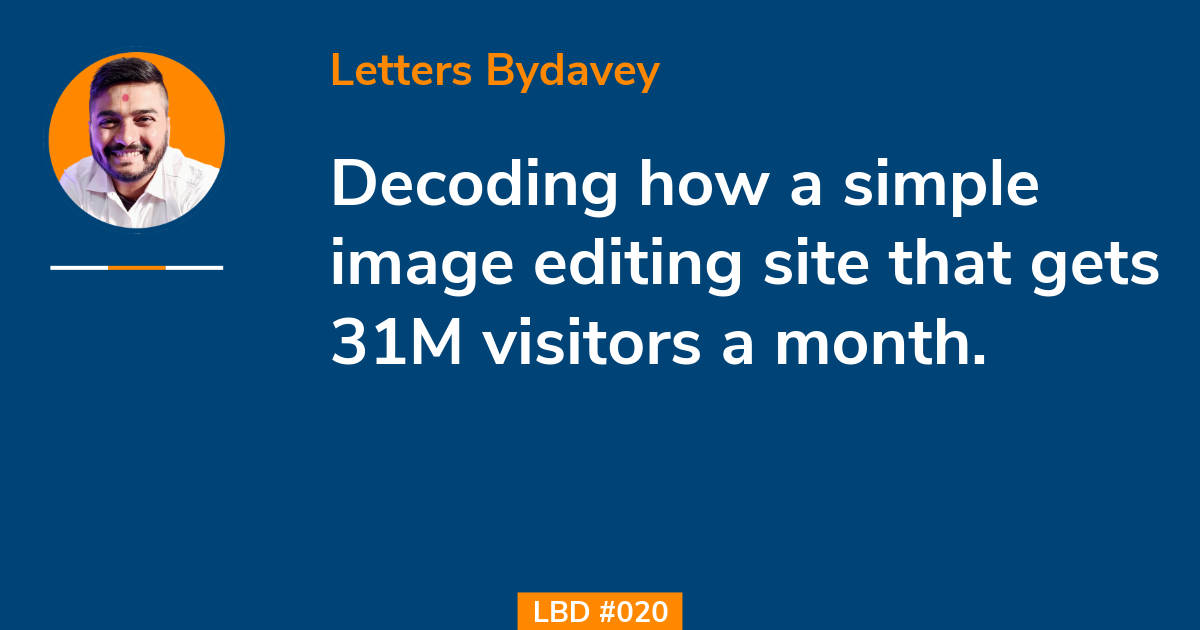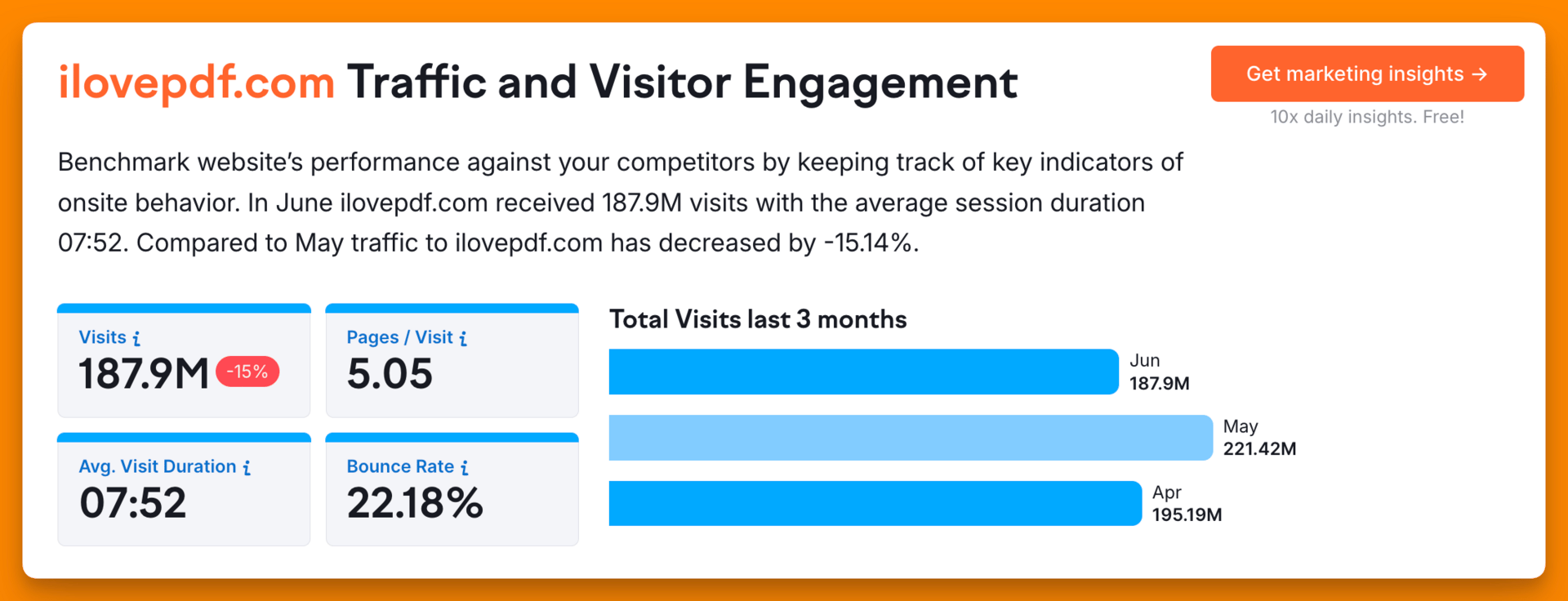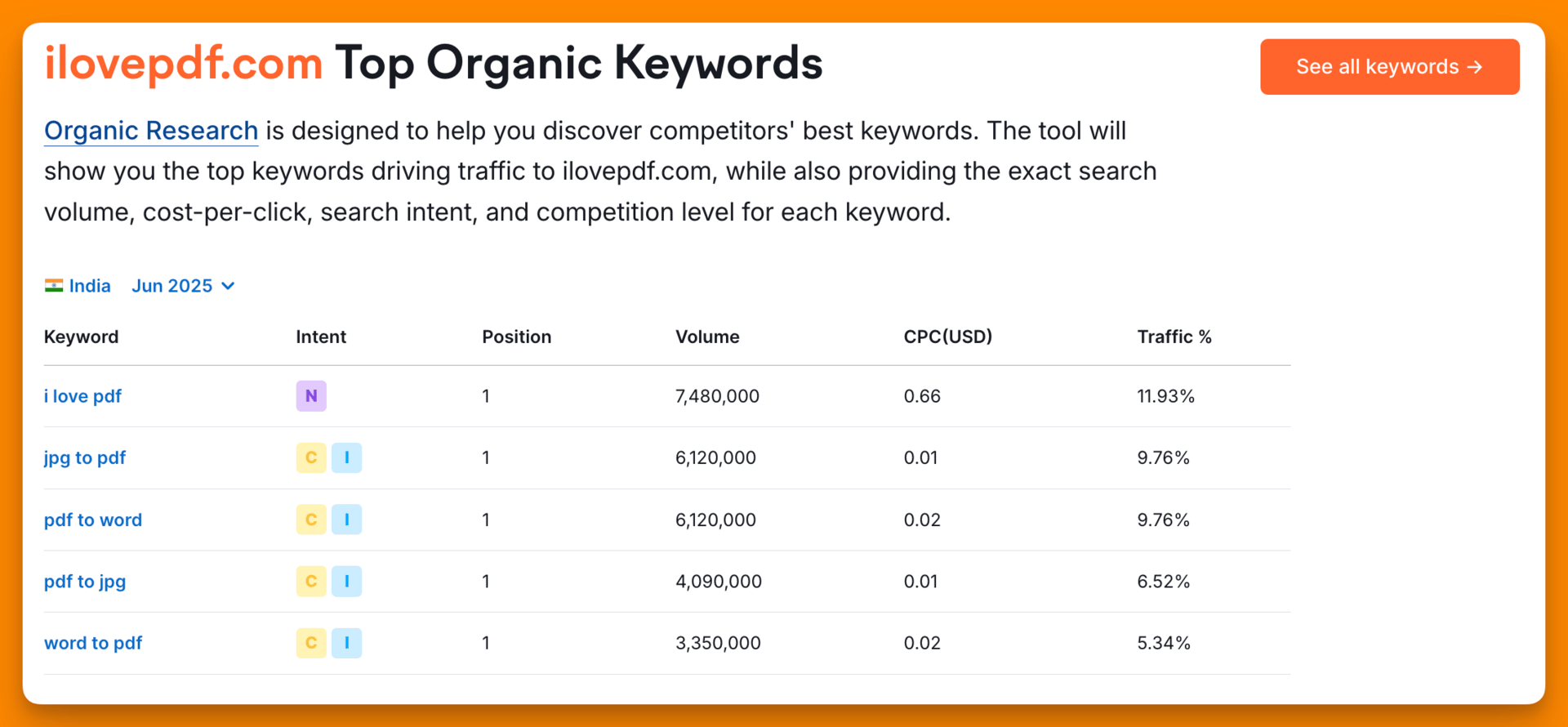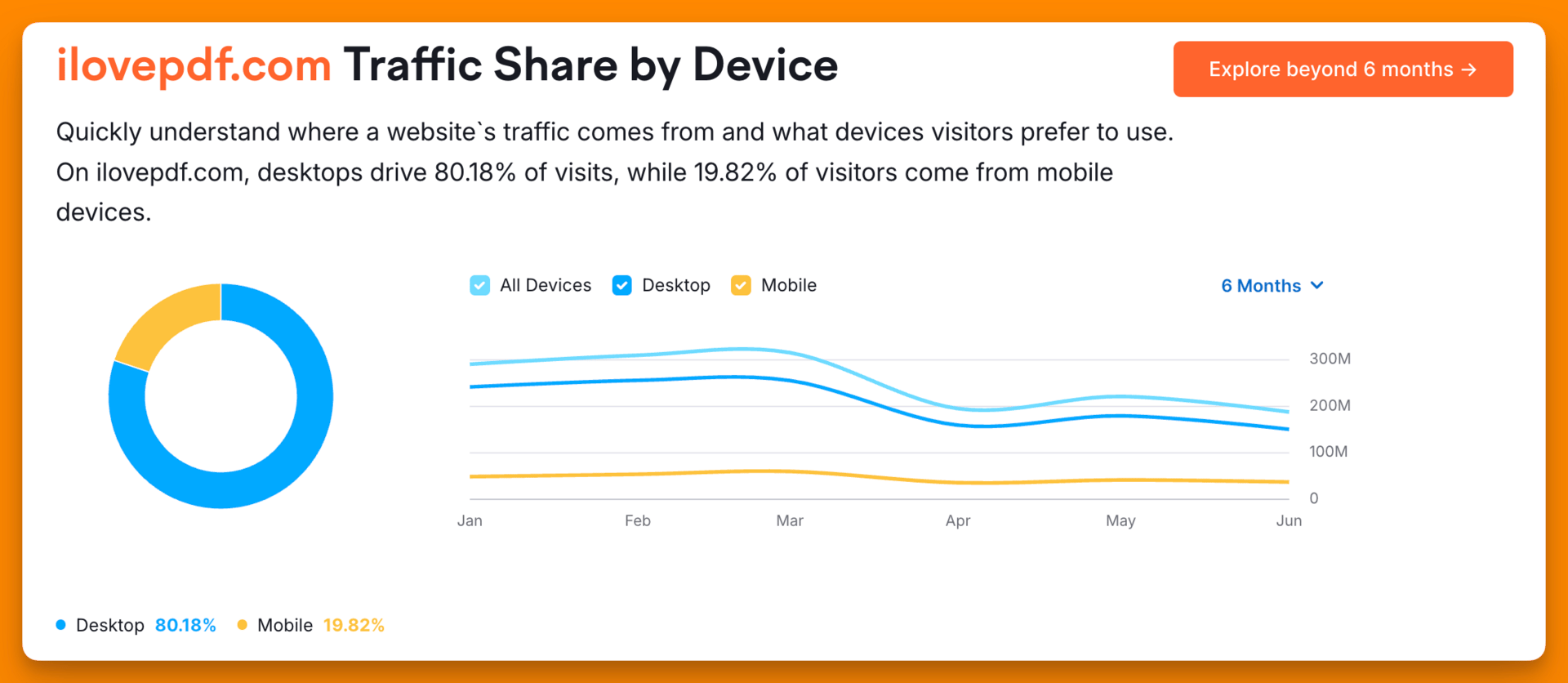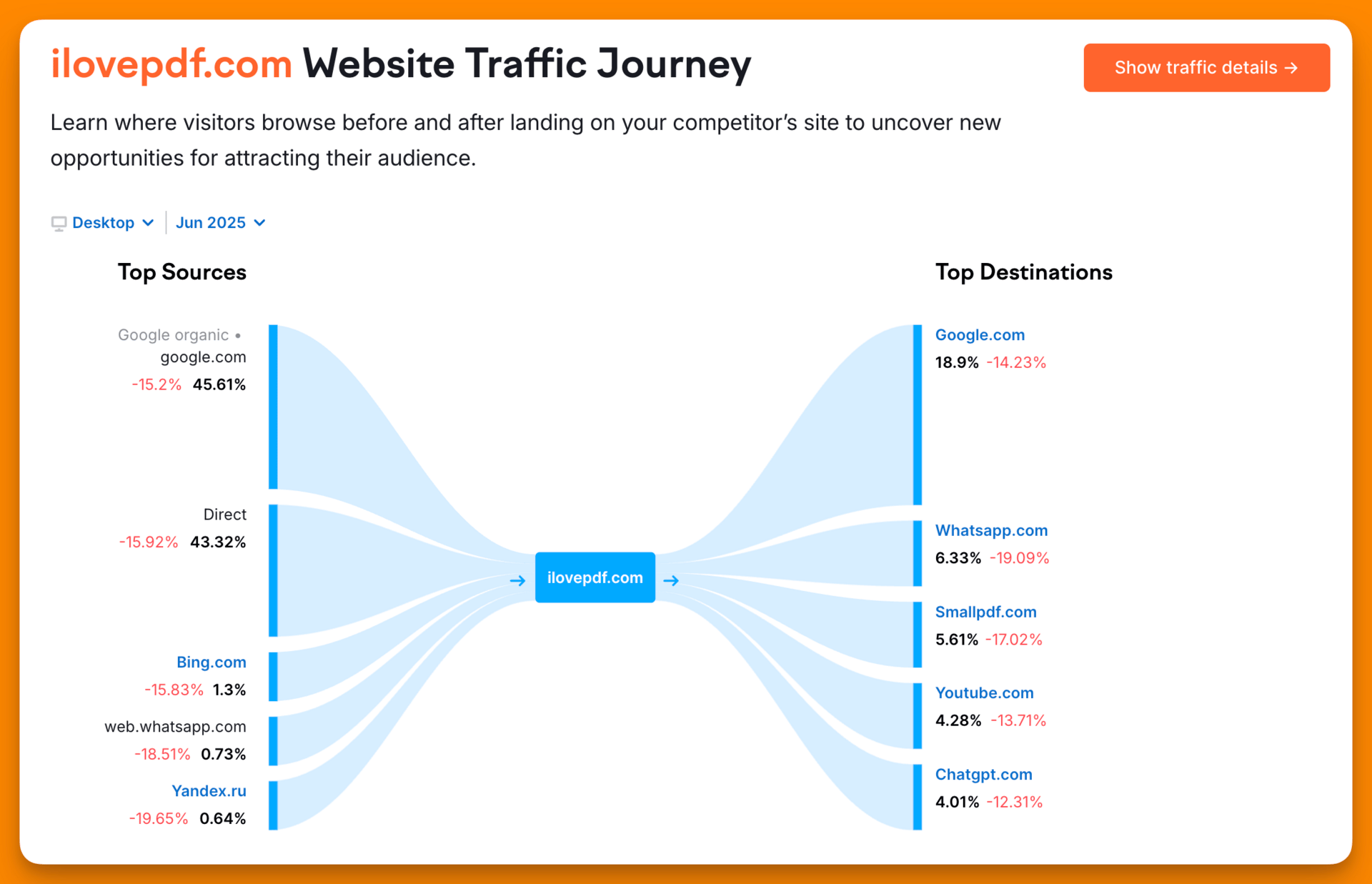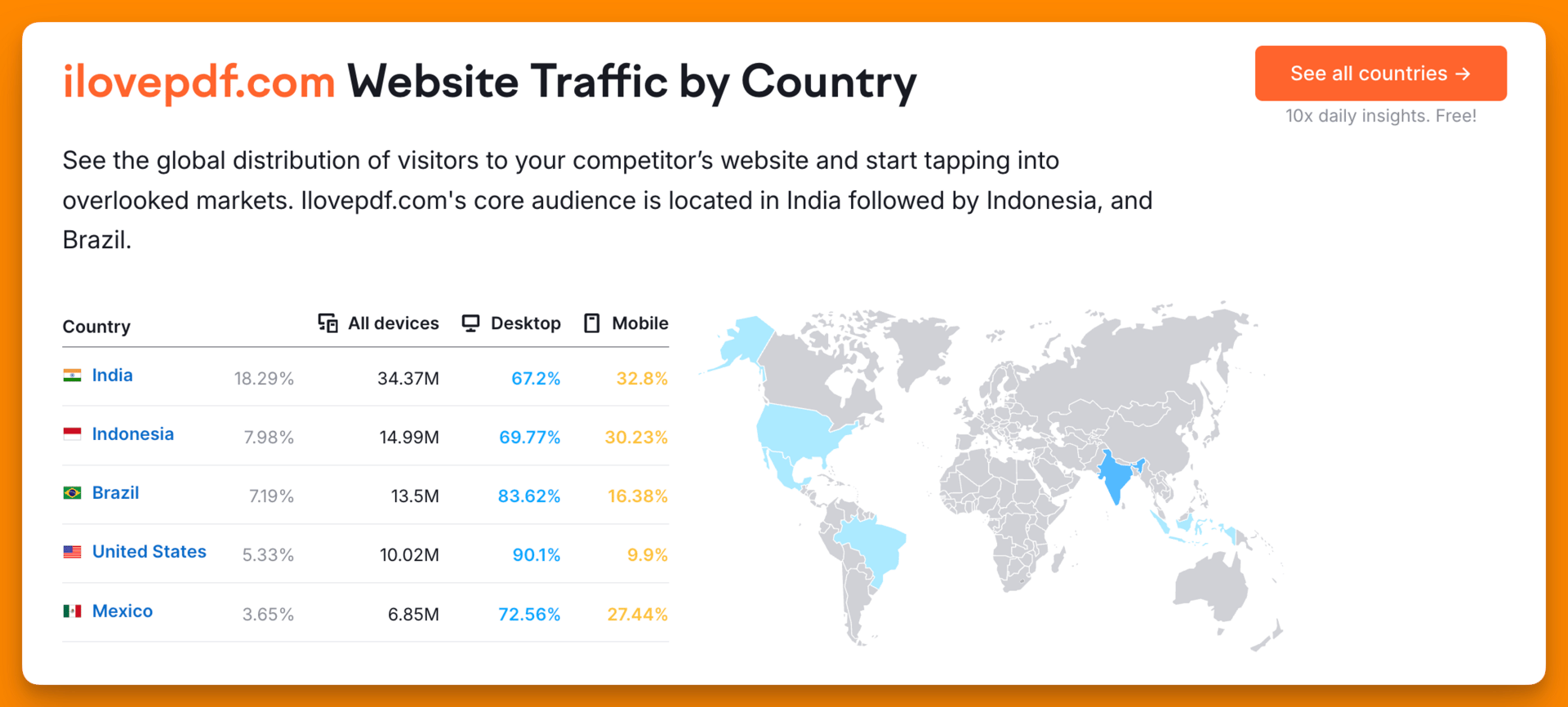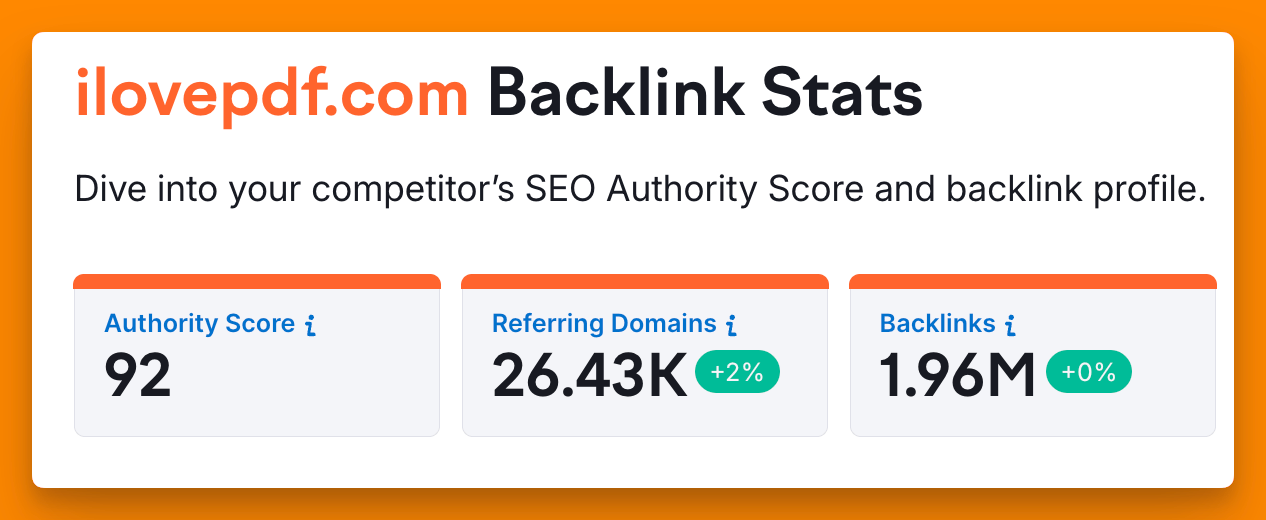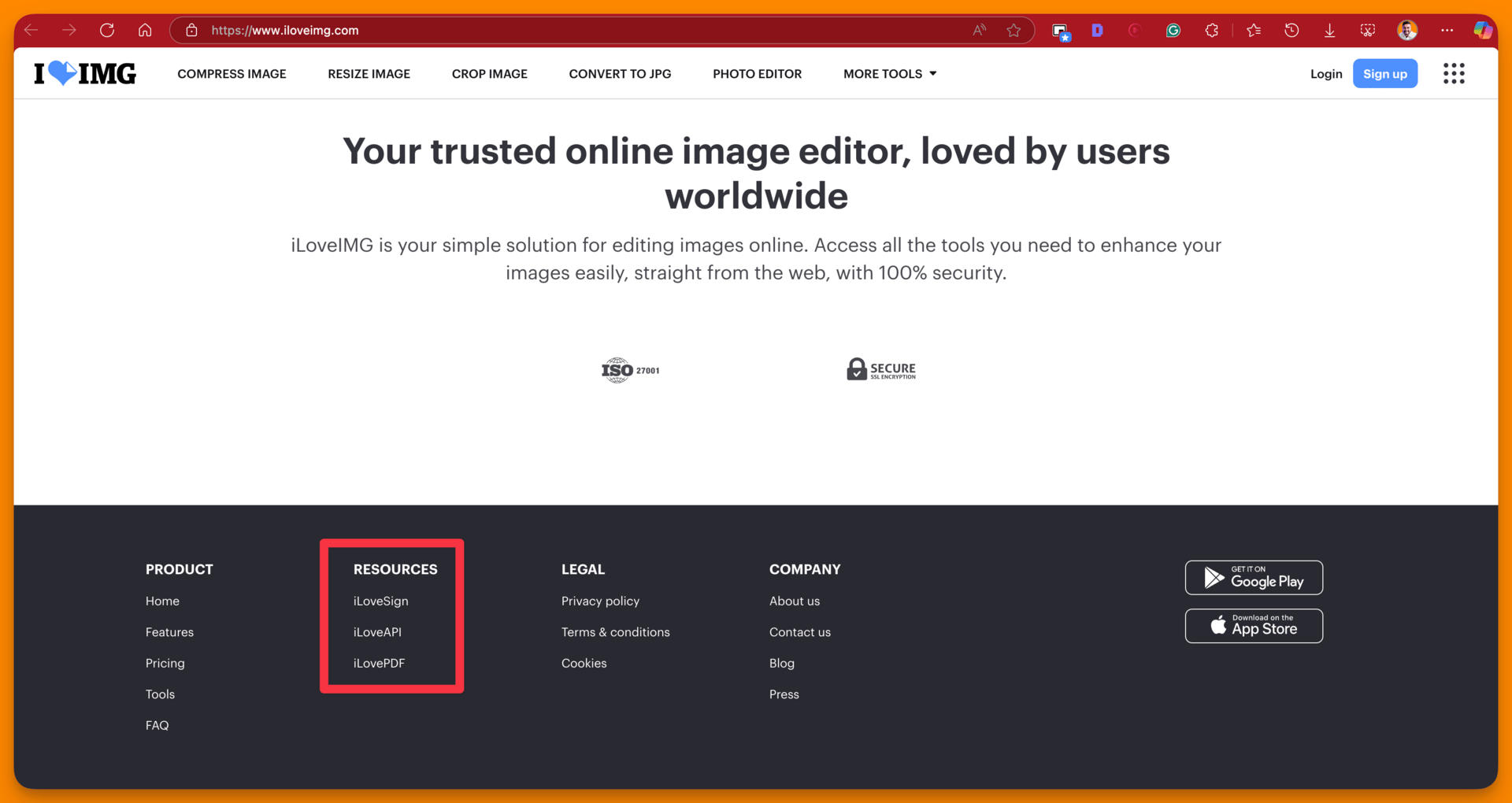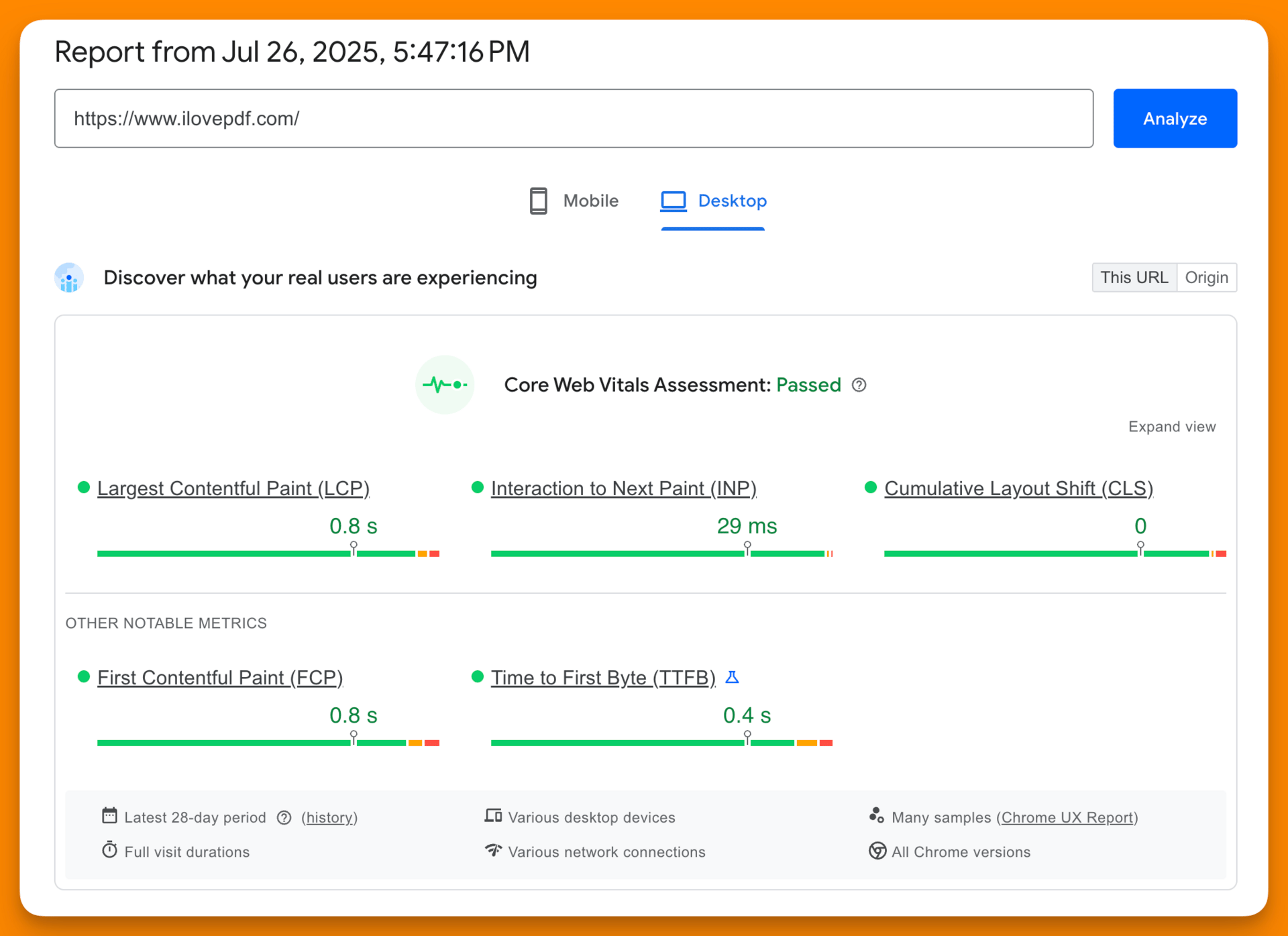- Letters Bydavey
- Posts
- LBD #021: ILovePDF gets 188M visitors monthly despite having thin content
LBD #021: ILovePDF gets 188M visitors monthly despite having thin content
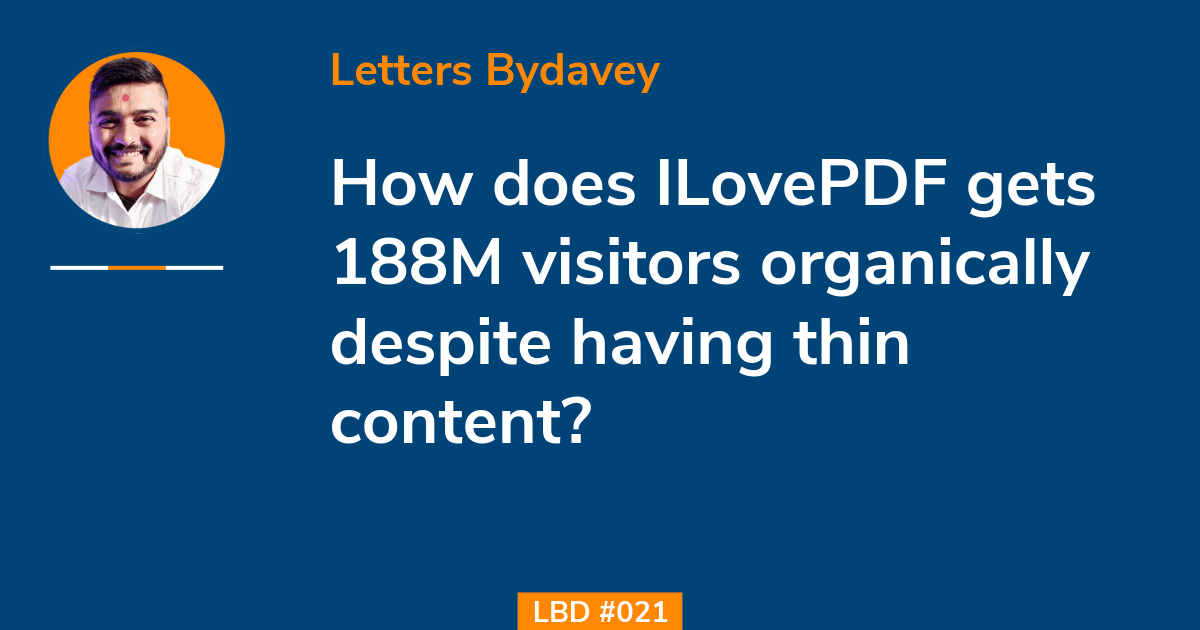
Most file conversion tools fade within months. ILovePDF is built differently. In this edition, we will cover the story of how it receives over 180 million visits per month.
Hint: The secret lies in understanding what users actually need versus what competitors think they want.
Business Model
In the previous edition, I covered the breakdown of ILoveIMG. Even that site gets around 31 million visitors each month.
ILovePDF operates on a freemium model. Developers pay per API call to embed PDF processing into their own applications. This B2B stream generates recurring revenue from SaaS companies and enterprise clients.
SEO Lessons To Learn From ILovePDF:
ILovePDF ranks among the global top 1,800 sites, serving 187.9 million visits per month with a 22.18% bounce rate. Tool pages, on average, hold users for 7 minutes 52 seconds per session.
Those numbers prove that a single-purpose toolkit can outperform funded SaaS brands without paid ads.
#1 On-Page SEO:
ILovePDF focuses on verbs plus file types, JPG to PDF, and PDF to Word. Each page created to target the page is a painkiller with clear intent.
Nearly every top query sending traffic is a verb+object phrase that drives 80.18% of all desktop visits via organic search.
Follow this framework to structure your pages around keywords: Verb-Object-Promise (VOP)
Pick the core verb (convert, merge, compress)
End with a trust promise (online, free, fast)
Add the file type or pain (pdf, jpg, large)
Pro Tip: If a query fails the VOP test, it will also fail to match purchase intent.
Furthermore, every tool page links to the corresponding sister page that reverses the action; for example, PDF to JPG links back to JPG to PDF. This traps users in a helpful loop and pushes up pages per visit to 5.05.
Think of corresponding angles your users would need help with, and:
Create reverse-action pages for all possible pages
Use contextual banners, not on-page pop-ups
Internally link to the next logical task
Pro Tip: If you only sell one core action, create guide pages that flip the outcome (export, reimport).
There’s also feature snippet optimization and task-driven content creation that has evidently helped ILovePDF.
Google rewards the clearest answer, not the longest. Which is why several pages get placements in featured snippets.
ILovePDF receives 45.61% of its traffic from Google. This isn’t the best part.
It’s actually the direct traffic that’s the best part. 43.32% of visitors visit directly. Meaning, they remember the tool and enter the exact URL directly.
That’s branding 101.
Furthermore, “How to reduce PDF size online” and similar posts rank because they mirror user tasks, rather than theoretical concepts. Each article funnels to the matching tool, directly contributing to user retention and conversion.
Lastly, ILovePDF has optimized the pages for an international audience, and the data speaks for itself, with 67.2% of desktop traffic coming from India alone.
#2 Off-Page SEO:
The backlink profile of ILovePDF is fantastic. The free API that developers embed in their tools builds the largest number of backlinks. The result? 1.96 million backlinks and 26.43k referring domains.
ILovePDF holds 1.96 million backlinks across 26,430 referring domains from education sites that share free resource lists. This tells us that there’s a bigger picture.
Authority flows from education sites because they prioritize utility over promotion.
To find pages that would naturally link to your product pages, figure out a way that makes your product a utility for their audience.
Here’s what you can do next:
Scrape edu and gov pages mentioning instructions that your product solves
Send a plain-text two-line email to them: Benefit highlighting outcome
Track link velocity; avoid spikes that trigger spam filters
Another thing I’ve found fascinating is how ILovePDF uses the WordPress plugin & Chrome extension route. This distribution turns other sites into acquisition nodes.
Each install sends referring traffic and brand mentions. Organic installs count as off-page SEO because every plugin page ranks in its own store.
Here’s what you can do to leverage marketplaces & directories:
Identify where users already work (CMS, browser)
Allow a few tasks as part of the free extension
Add more tools in the footer as a backlink
Furthermore, ILovePDF links to sister tools like ILoveIMG and ILoveIMG links back to ILovePDF, ILoveSign, and ILoveAPI. This way, they create a private backlink flywheel that consistently sends organic traffic and builds SEO authority.
You, too, can create your own private backlink flywheel thematically by focusing on:
Same user problem, different format
Common design language for trust
Reciprocal backlinks in the footer
Pro tip: Internal links work even harder and better when brands solve adjacent tasks.
#3 Technical SEO:
ILovePDF absolutely crushes the CWV metrics measured via Google Pagespeed Insights. Despite being tech-heavy, the page loads under 1 second on desktop and under 2 seconds on mobile.
Pro tip: Google cannot ignore a site that saves users' time and resources.
To begin your technical SEO with:
Audit Web Vitals with Lighthouse
Inline critical CSS, defer analytics
Use worker queues for heavy jobs
ILovePDF uses OVH cloud services plus vRack to keep latency low for 2 million daily users across 140 countries. Page speed stays consistent even when files are uploading.
Pro tip: Technical architecture becomes a competitive moat when it consistently outperforms alternatives.
If you want to outlive your competition, get better at technical SEO by:
Offload heavy conversions to worker nodes
Benchmark time to first byte when the traffic peaks
Add a status badge on tool pages to reduce support tickets
Notice how every tool page has the upload section above the fold, no login required, no pop-ups.
Also, there’s very little content. Google should flag such pages as thin content and might block those pages from its index.
But ILovePDF’s pages are thriving on SERPs. Why? Because the page satisfies the search intent without any effort for Google’s end user.
This makes the user love Google for suggesting exactly what they were looking for. Google gets a satisfied user, the user gets what they were searching for, and ILovePDF gets a potential customer.
Win-win-win.
Here’s a framework you can use to dominate SERPs:
Any step exceeding 5 seconds dies
Map every click from SERP to task completion
Visual feedback every 2 seconds during processing
Pro tip: UX friction is an SEO issue because pogo-sticking inflates bounce rate.
What can you do now?
Follow me on LinkedIn to get better at content marketing
Find your first set of customers by promoting your SaaS here
Book a call for a 1-on-1 for a personalized content marketing strategy
Share your thoughts on what your biggest challenge is with growing SEO?
